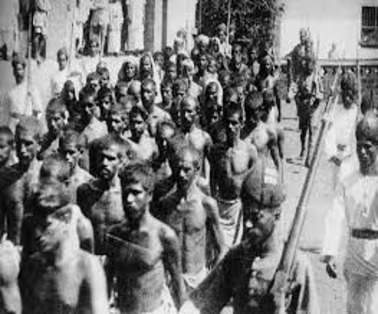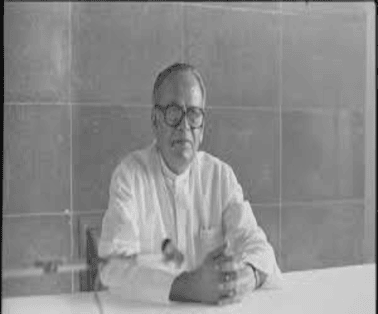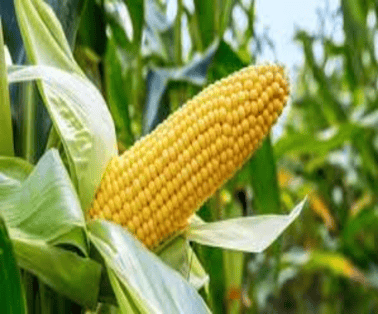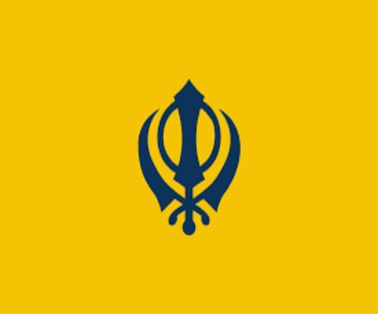August 20 marks the centenary of the Moplah rebellion, which is also known as the Malabar Rebellion. It had been an uprising of Muslim tenants against British rulers and local Hindu landlords.
Moplah Rebellion History
- The uprising, which began on August 20, 1921, went on for several months marked by many bouts of bloodstained events.
- Some historical accounts state the uprising led to the loss of around 10,000 lives, including 2,339 rebels.
- It has often been perceived as one of the first nationalist uprisings in southern India.
- It has even been described as a peasant revolt. In fact, in 1971, the then Kerala government had included the participants of the rebellion in the category of freedom fighters.
- The incidents of the uprising took place in regions which are currently under the Malappuram district in north Kerala.
What Led To Moplah Rebellion?
- Muslims had arrived in Kerala in the 9th century AD as traders via the Arabian Sea even before north India was invaded by Muslim armies from the west.
- They were given permission to carry on trade and settle by the native rulers. Many of them married local women and their descendants came to be called Moplahs (which means son-in-law in Malayalam).
- Most Moplahs were, however, not descended from the Arabs and were predominantly converted Hindus during Tipu Sultan’s capture of Malabar.
- Before Tipu Sultan’s attack on Malabar, in the traditional land system in Malabar, the Jenmi or the landlord held the land which was let out to others for farming. There were mainly three hierarchical levels of ownership including the cultivator, and each of them took a share of the produce.
- The Moplahs were mostly cultivators of the land under this system and the Jenmis were upper caste Hindus.
- During Hyder Ali’s invasion of Malabar in 1765, the Moplahs supported him.
- Many Hindu landlords fled Malabar to neighbouring areas to avoid persecution and forced conversions.
- During this time, the Moplah tenants were accorded ownership rights to the lands.
- After the death of Tipu Sultan in 1799 in the Fourth Anglo-Mysore War, Malabar came under British authority as part of the Madras Presidency.
- The British set out to restore ownership rights to the Jenmis who had earlier fled the region.
- Jenmis were now given absolute ownership rights of the land which was not the case previously.
- The new laws deprived the peasants of all guaranteed rights to the land, share in the produce they earlier got and in effect rendered them landless.
- Many of the riots also took a communal hue with Hindus being targeted and killed for not converting to Islam.
Moplah Rebellion And the Khilafat Movement
- The Mappila Rebellion was part of the non-violent Khilafat Movement led by Mahatma Gandhi and the Ali Brothers in 1921-22.
- The Mappila Muslims, who reside in the south Malabar region, had taken the movement seriously and engaged in combat with the well-equipped British army.
- The Mappila warriors, under the leadership of cleric Ali Musliyar and Variyam Kunnath Kunjahammed Haji (V K Haji), captured the taluks of Eranadu and Valluvanadu from the British and established their own rule.
- After a short period, the British suppressed the rebellion savagely by letting loose the Gurkha Regiment, Dorset Regiment etc.
- According to official data, over 45,000 rebels were imprisoned in different jails across the country
- The rebellion had a huge impact on the region as well as the country.
- Mahatma Gandhi distanced himself from the rebels stating that the rebellion was just “an outburst of fanatics”.
Impact Of Malabar Rebellion
- The rebellion of Mappilas inspired by religious ideology and a conception of an alternative system of administration i.e. a Khilafat government, dealt a blow to the nationalist movement in Malabar.
- The fanaticism of rebels, foregrounded by the British, fostered communal rift and enmity towards the Congress.
- The exaggerated accounts of the rebellion engendered a counter campaign in other parts of the country against ‘fanaticism’ of Muslims.
- The thrust of the post-rebellion Muslim reform movement in Malabar was a rigorous campaign against orthodoxy.
- The traumatic experience of the uprising also persuaded educated sections of the Muslim community in Malabar to chalk out ways to save the community from what they saw as a pathetic situation.
What was Khilafat Movement?
- The Khilafat agitation was launched in India in 1919.
- It was led by Muhammad Ali and Shaukat Ali.
- The demands of the movement were:
- Control of Turkish Caliphate or Khalifa over islamic sacred places in the erstwhile Ottaman Empire.
- The Jazirat-ul-Arab i.e., Arabia, Syria, Palestine, and Iraq remain sunder Muslim Sovereignty
- Khalifa is left with sufficient territory to defend the Islamic faith.
- The movement was supported by the Indian National Congress.
- Mahatma Gandhi wanted to align it to the Non-Cooperation Movement to unite Hindus and Muslims against the British rule.
The Peasant Movement and Its Role in the Moplah Uprising
Indigo movement: –
- This movement started in 1859 in Govindpur village of Bengal. The farmers of Bengal wanted to cultivate rice in their fields but European were forcing them to cultivate indigo.
- In this situation, the peasants led by local leaders Digambar Vishwas and Vishnu Vishwas started a movement. All farmers, either Hindus or Muslims, were involved in this movement. Finally, the government had to close the indigo plant and the government constituted the indigo commission in 1860 and ordered an inquiry. The decision of the Commission was in favor of the farmers.
- This movement is described by Deenbandhu Mitra in his play Neeladarpan.
Pabana Movements
- This movement started against the exploitation of the farmers by the zamindars in 1873 -76. In this, the farmers formed an association named “Kisan Sangh” in Yusufshahi Pargana of Pabana district. Ishana Chandra Rai, Keshav Chandra Rai were the main leaders of this movement.
- This movement was against the zamindars and moneylenders but not against colonialism. Leaders like Bakim Chandra Chatterjee, Dwarikanath Ganguly supported it.
Deccan Revolt:
- The agrarian movement was not confined to North India alone, but it also spread to the south as the moneylender in Maharashtra’s Poona and Ahmednagar districts were exploiting the peasants, with the government raising the tax under the Ryaytwari system. The taxes raised due to the American civil war of 1864, were not reduced even after the end of the war, then the anger of the farmers increased.
- At the same time, in December 1874, a moneylender Kaluram obtained a decree auctioning the house against the farmer (Baba Sahib Deshmukh). On this, the farmers started the movement. In this, farmers refused to buy goods from Mahajan, moneylender shops, work in their homes, and work in their fields.
- To pacify this movement, the government protected farmers against moneylenders by the “Deccan Farmers Relief Act”.
Champaran Satyagrah: –
- This movement started in a place called Champaran in Bihar to protest against the Tinkathia system. In this system, the British planters had signed a contract with the farmers of Champaran, under which farmers were required to cultivate indigo on 3/20th of the land.
- By the discovery of chemical dyes ended the indigo market in the late 19th century. But the planters made illegal collection from the farmers to stop indigo cultivation.
- Local leaders invited Gandhiji in this movement. After the arrival of Gandhiji, this movement became the subject of discussion at the national level.
- The government and the planters had to listen to the farmers’ side. The government constituted a commission to pacify this movement, in which Gandhiji was also made a member and the planters relied on returning 25% of the illegal recovery.
Kheda Satyagraha
- This movement started in Kheda (Gujarat) in 1918 when the government was collecting tax even after crop wastage. This movement was led by Gandhiji and Sardar Vallabhbhai Patel.
- To pacify this movement, Gandhiji said that the farmers incapable of paying rent should not be recovered while the farmers capable of paying rent will give the entire tax voluntarily.
Bardoli Satyagraha
- This movement also started due to an increase in taxes. It started in 1928 in Bardoli, Surat.
- Sardar Vallabhbhai Patel emerged as a national leader in this movement. In this, he refused to pay taxes and also used social boycott of the farmers who paid the tax to the government.
Tebhaga Movement:
- The Tebhaga Movement of Bengal in 1946 was the most powerful in the peasant movement, in which the farmers started a struggle to reduce the rate of rent to one-third as per the recommendation of the ‘Floud Commission’.
- The ‘Tebhaga Movement’ of Bengal was to provide two-thirds of the crop to the oppressed sharecroppers. The leaders of this movement were Kampram Singh and Bhavan Singh.
Santhal Rebellion
- The Santhals take global pride in the Santhal rebellion where over 1,000 Santhals and leaders of Sidho and Kanho Murmu rose against domination and battled against the vast East India Company (The Britishers)
Pagri Sambhal Movement
- It was a successful farm agitation that forced the British government to repeal three laws related to agriculture.
- Bhagat Singh’s uncle Ajit Singh was the force behind this agitation.
Peasant Movement in Oudha
- It was led by Baba Ramchandra, a Sanyasi, who had earlier been to Fiji as an indentured laborer.
- He led a peasant’s movement in Awadh against Talukdars and Landlords.
- He demanded reduction of rent, abolition of Begar and the boycott of landlords
To Download Monthly Current Affairs PDF Click here
Click here to get a free demo
Everything About CLAT 2025



